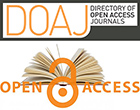ANALYSIS OF THE GROWTH RATE OF FEMININE MOSQUITO THROUGH DIFFERENCE EQUATIONS
Abstract
The mosquito life cycle is developed mathematically with the concept of difference equation. The qualitative properties of the life-cycle are analyzed. The Lyapunov function is defined for difference equation to stabilize the system of mosquito life cycle. A novel technique is applied for deriving stability criterion, especially the back-stepping control technique is applied for discrete time system. The bifurcation analysis is also furnished for the model of mosquito life cycle. The new technique is applied in the mosquito life cycle model and its results are examined through MATLAB.
Keywords
Difference Equation, Mosquito, Bifurcation, Equilibrium, Strict Feedback
Full Text:
PDFReferences
- Aron J. L. Mathematical modelling of immunity to malaria. Math. Biosci., 1988. Vol. 90, No. 1–2. P. 385–396. DOI: 10.1016/0025-5564(88)90076-4
- Cushing J.M. Difference equations as models of evolutionary population dynamics. J. Biol. Dynam., 2019. Vol. 13, No. 1. P. 103–127. DOI: 10.1080/17513758.2019.1574034
- Dang Q.A., Hoang M.T. Lyapunov direct method for investigating stability of nonstandard finite difference schemes for meta population models. J. Difference Equ. Appl., 2018. Vol. 24, No. 1. P. 15–47. DOI: 10.1080/10236198.2017.1391235
- Gümüş M. The global asymptotic stability of a system of difference equations. J. Difference Equ. Appl., 2018. Vol. 24, No. 6. P. 976–991. DOI: 10.1080/10236198.2018.1443445
- Kangalgil F., Kartal S. Stability and bifurcation analysis in a host-parasitoid model with Hassell growth function. Adv. Differ. Equ., 2018. Vol. 2018. Art. no. 240. P. 240–248. DOI: 10.1186/s13662-018-1692-x
- Kooi B.W., Aguiar M., Stollenwerk N. Bifurcation analysis of a family of multi-strain epidemiology models. J. Comput. Appl. Math., 2013. Vol. 252, P. 148–158. DOI: 10.1016/j.cam.2012.08.008
- Nagaram N. B., Rasappan S. A novel mathematical technique for stability analysis of plasmodium life cycle in hepatocyte. Indian J. Public Health Research & Development, 2019. Vol. 10, No. 6. P. 1534–1544.
- Nagaram N.B., Rasappan S. Plasmodium life cycle in hepatocyte with varying population. Indian J. of Public Health Research & Development, 2019. Vol. 10, No. 6. P. 1545–1558.
- Ngwa G.A., Shu W. S. A mathematical model for endemic malaria with variable human and mosquito populations. Math. Comput. Model. Dyn. Syst., 2000. Vol. 32, No. 7–8. P. 747–763. DOI: 10.1016/s0895-7177(00)00169-2
- Rasappan S., Mohan K.R. Balancing of nitrogen mass cycle for healthy living using mathematical model. In: Mathematical Modeling and Soft Computing in Epidemiology, J. Mishra, R. Agarwal, A. Atangana (eds.). Boca Raton: CRC Press, 2020. P. 199–215. DOI: 10.1201/9781003038399-10
- Rasappan S., Mohan K.R. Neutralizing of nitrogen when the changes of nitrogen content is rapid. In: Mathematical Modeling and Soft Computing in Epidemiology, J. Mishra, R. Agarwal, A. Atangana (eds.). Boca Raton: CRC Press, 2020. P. 217–229. DOI: 10.1201/9781003038399-11
- Rasappan S., Murugesan R. Computation of threshold rate for the spread of HIV in a mobile heterosexual population and its implication for sir model in healthcare. In: Soft Computing Applications and Techniques in Healthcare, A. Mishra, G. Suseendran, T.-N. Phung (eds.). Boca Raton: CRC Press, 2020. P. 97–112. DOI: 10.1201/9781003003496-6
- Rasappan S., Nagaram N.B. Stability analysis of a novel mathematical model of plasmodium life cycle in mosquito midgut. Int. J. Innovative Technology Exploring Engineering, 2019. Vol. 8, No. 9. P. 1811–1813. DOI: 10.35940/ijitee.I8972.078919
- Smith D. L., et al. Ross, Macdonald, and a theory for the dynamics and control of mosquito-transmitted pathogens. PLoS Pathog, 2012. Vol. 8, No. 4. Art. no. e1002588. DOI: 10.1371/journal.ppat.1002588
- Traoré B., Sangaré B., Traoré S. A mathematical model of malaria transmission in a periodic environment. J. Biol. Dyn., 2018. Vol. 12, No. 1. P. 400–432. DOI: 10.1080/17513758.2018.1468935
- Vijayalakshmi G.M., Rasappan S., Rajan P., Nguyen H.H.C. The role of harvesting in a food chain model and its stability analysis. In: Proc. 2nd Int. Conf. Mathematical Modeling and Computational Science. SL. Peng, CK. Lin, S. Pal (eds.). Ser. Adv. Intell. Syst. Comput., vol 1422. Singapore: Springer, 2022. P. 11–23. DOI: 10.1007/978-981-19-0182-9_2
Article Metrics
Metrics Loading ...













